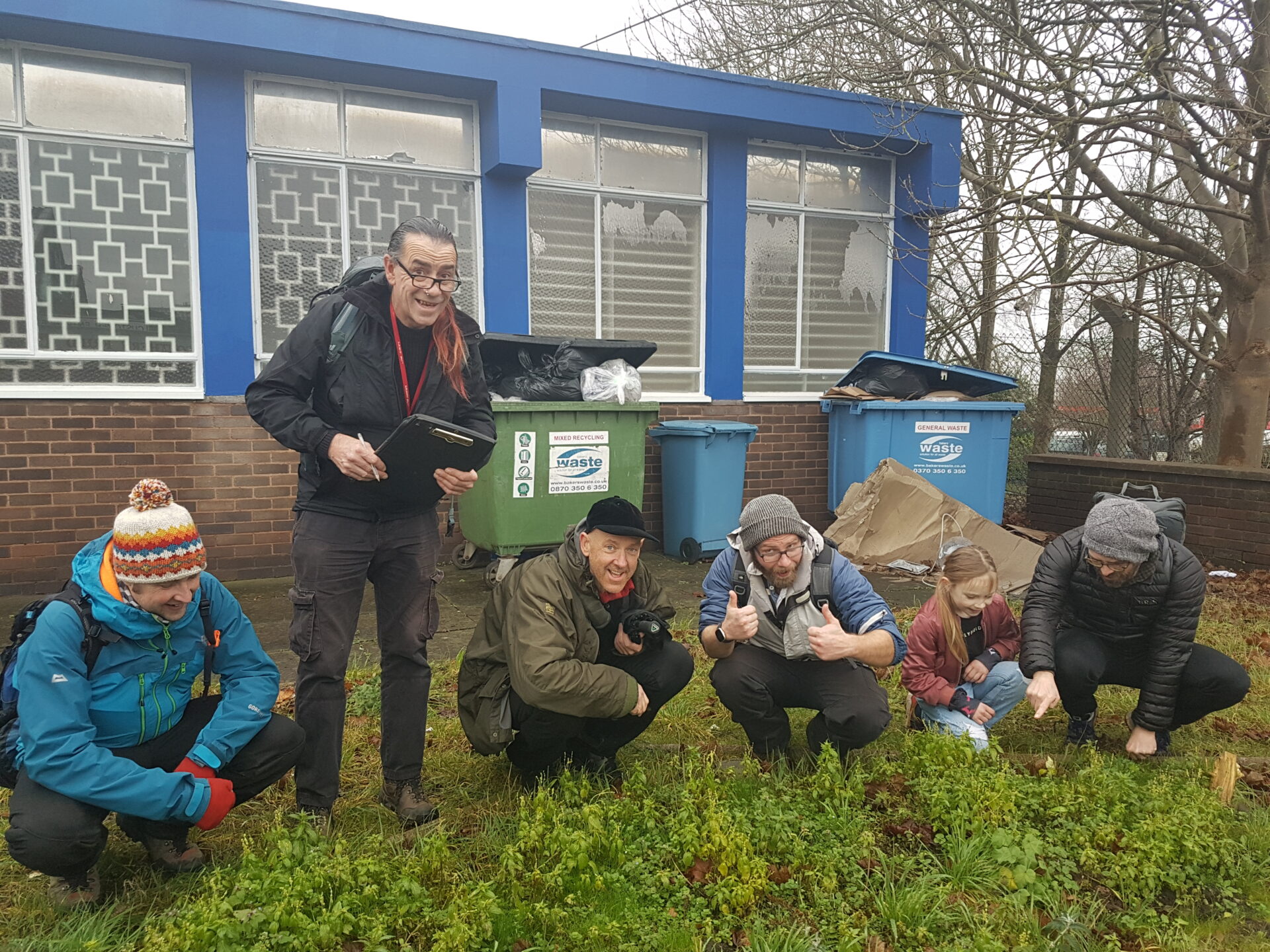Where to hunt?
Plan your route: urban and coastal locations usually have more wild plants in flower, due to the 'heat-island' effect and because frosts are less likely by the sea - but once you start looking, you will find plants everywhere.
Who with?
It's up to you whether you go out with friends and family, as part of a local recording group or opt for a solo hunt. There may be Group Hunts happening near you, so if you'd like some company, try our Group Hunts page, contact your local group organiser or BSBI County Recorder (contact details here) and check on social media to see if anything is planned for your area.
When?
Any time between Sunday 29th December 2024 and Wednesday 1st January 2025. Get ready to record during a short walk but no longer than 3 hours (you can “stop the clock” for tea-breaks, lunch and comfort stops). You can contribute as many different lists as you like from different areas as long as you don’t exceed the 3 hour limit for each new list. This is so that the data you collect will be comparable across the years.
How to record?
Decide how you'd like to record your finds, so EITHER download the latest version of the BSBI recording app onto your phone OR have a notebook and pencil ready to make notes while you are out hunting before uploading when back, OR if you are an experienced botanist familiar with scientific names, you could use a BSBI recording card for your county. If you opt to use the recording app, you'll want to check these guidance notes first.
If you are getting started with botany, we recommend that you try using the BSBI recording app to send us details of what you saw. Using the app on your phone means that you can record your finds as you walk; you'll be able to add photos (so we can help you ID any plants you're unsure of), and automatically include accurate grid references, using your phone's GPS. The app is very user-friendly and we can help you if you run into any problems - just email the Support Team.
What to record?
Record wild and naturalised plants (but not planted or garden species) in flower. More info about this on our Definitions: wild, native or alien? page. Please check that plants are actually flowering – that catkins on trees are open, that grasses have open florets, that stigmas or anthers in the middle of flowers are clearly visible etc. Please don't include ferns, mosses, fungi or lichens - none of these has flowers!
Not sure what your plant is? Using the app, you will be able to upload a photo of an unidentified plant and our experts will try to identify it for you. Take a look at our top tips on photographing plants with conservation in mind and to make them easier to ID. Top tip: take photographs from the side (it's harder to ID plants from above) and take a pic of the leaves too.
If you find nothing in bloom - we still need to know please. Nil records are important too and will feed into the analysis. The app has a facility to log nil records.
Why join the Hunt?
It will be cold out there so wrap up warm and remind yourself why it's worth taking part: the data you collect are crucial for helping us understand more about how British & Irish wild and naturalised plants are responding to climate change. And by joining the Hunt, you'll be shaking off the midwinter blues, reconnecting with nature and keeping your plant ID skills sharp, ready for spring.




